Announcing the Winners of the 2024 Manufacturing Leadership Awards
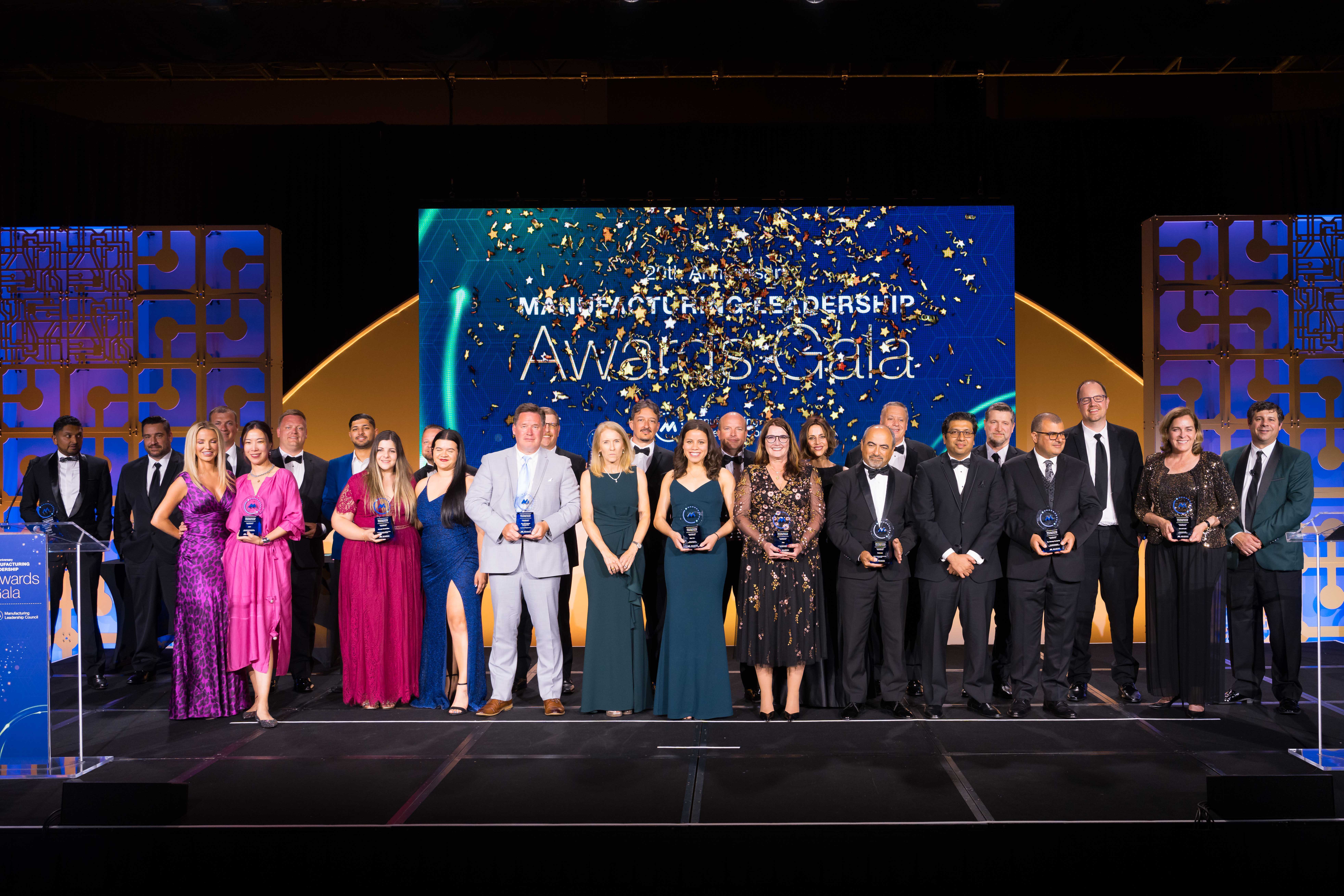
The names are in! The Manufacturing Leadership Council—the NAM’s digital transformation division—is pleased to announce the winners of the 2024 Manufacturing Leadership Awards.
Now in its 20th year, the awards competition recognizes outstanding manufacturing companies and their leaders for groundbreaking use of advanced manufacturing technology.
“The class of 2024 should indeed be proud of their achievements in advancing the digital model of manufacturing,” said MLC Founder, Vice President and Executive Director David R. Brousell. “The awards reflect the truly incredible amount of innovation taking place in all sectors of the industry.”
Manufacturing Leader of the Year: Cooley Group President and CEO Daniel Dwight is the 2024 Manufacturing Leader of the Year.
- Dwight, who also serves on the MLC’s Board of Governors and is a member of the Executive Committee of the NAM Board of Directors, has overseen a significant turnaround in Cooley’s business performance through digital transformation, with a commitment to investing in smart factory technologies and developing a digital-ready workforce and business culture.
- In addition, the MLC named Cooley Group the 2024 Small/Medium Enterprise Manufacturer of the Year.
Large Enterprise Manufacturer of the Year: Intertape Polymer Group is the 2024 Large Enterprise Manufacturer of the Year.
- The award recognizes IPG’s achievements in digital transformation, including technology integration and workforce training.
- The company has also made noteworthy strides in sustainability through reductions in both energy usage and waste.
More honors: The MLC also announced winners in 11 project and individual categories, as well as the winners of the Manufacturing in 2030 Awards. The latter are given to projects with particularly forward-thinking innovations.
- The MLC honored all finalists and winners at the Manufacturing Leadership Awards Gala last night in Marco Island, Florida. A complete list of finalists and winners is available here.
Nominations for the 2025 season of the Manufacturing Leadership Awards will open on Sept. 16, 2024. More information is available here.
Centrus Aims to Make U.S. a Top Uranium Enricher
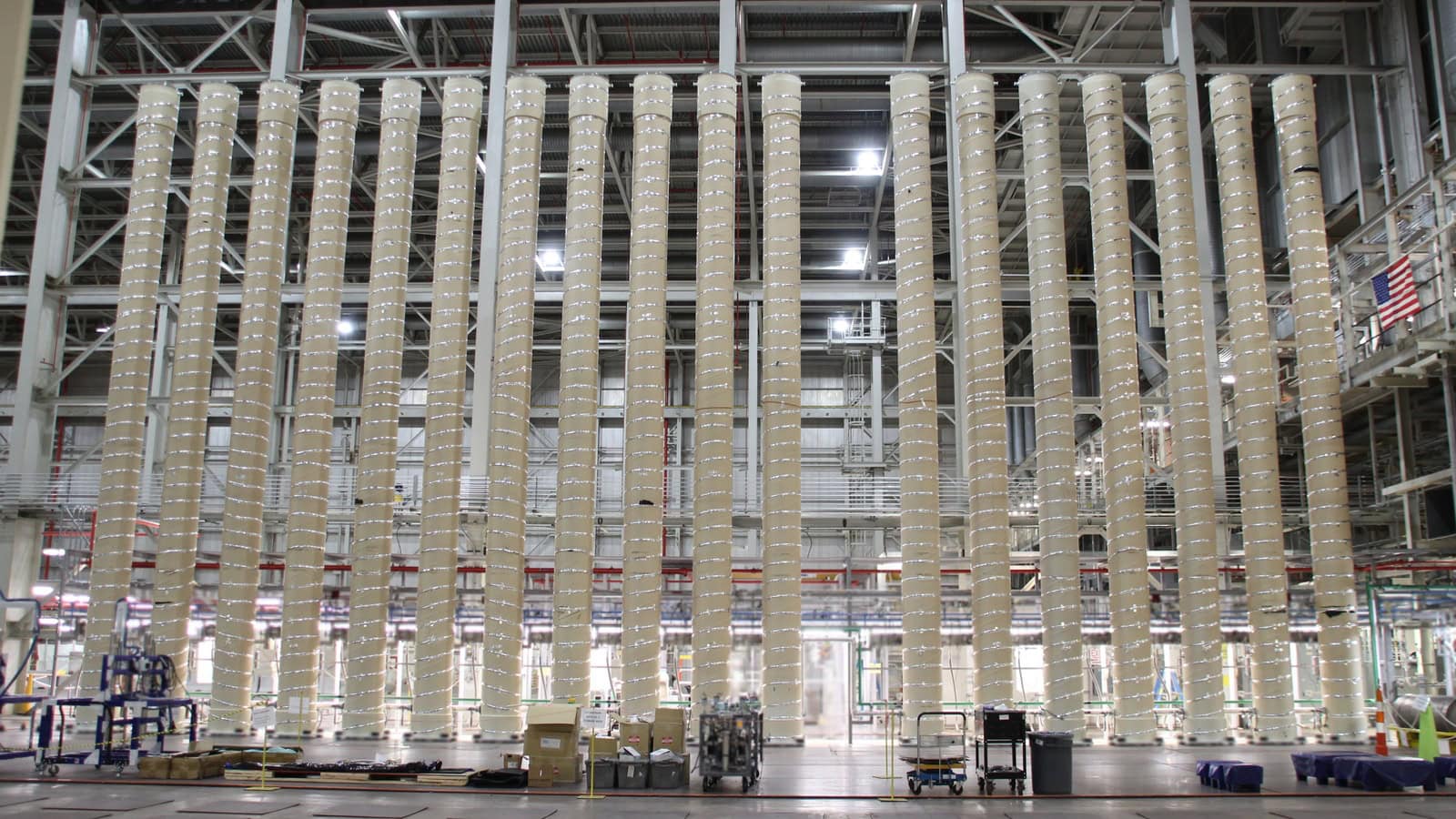
The most difficult part of creating nuclear power is enriching the uranium—and that’s precisely where Centrus Energy Corporation has set out to make America the global leader.
A unique position: The Bethesda, Maryland–headquartered Centrus, which is the only U.S.-owned enricher of uranium, can trace its roots as a company back to the Manhattan Project, the secret government initiative during World War II that brought the U.S. into the atomic age.
- The company is uniquely poised to make good on its aim to bring clean, plentiful, affordable and reliable energy to the world.
- “Nuclear power is reliable—so much so that we’ve seen a lot of the growth in nuclear generation around the world,” Centrus President and CEO Amir Vexler told the NAM.
- In 2023, global nuclear power generation grew 8%, after declining the prior year.
Geopolitical-fueled growth: The driver behind the expansion? Russia’s 2022 invasion of Ukraine, according to Vexler.
- “Since 2022, a lot of nations realized they have to have some level of sovereignty around power generation,” he said. “With nuclear, you’re not dependent on fossil fuels from other countries, which is particularly important if you’re a nation that’s not rich in resources.”
- In the more than two years since the start of the war in Ukraine, Russia has lost its position as the world’s top oil and gas exporter, as the U.S. and allies have sought to wean themselves off Russian energy imports.
A catch-22: But there’s no nuclear power without uranium—and ironically, Russia holds approximately 44% of the world’s uranium-enrichment capacity, according to the Department of Energy, and supplies nearly a quarter of the enriched uranium used in U.S. reactors.
- However, that monopoly may soon start to crumble, as in May President Biden signed bipartisan legislation to ban the import of Russian low-enriched uranium, also known as LEU.
Building up domestic supplies: At the same time, the U.S. is moving to ramp up domestic uranium production—and Centrus is key to making it happen.
- In November 2022, the DOE announced a $150 million cost-shared award with a Centrus subsidiary to demonstrate the capability to produce high-assay low-enriched uranium, or HALEU, an advanced fuel form needed to power the next generation of nuclear reactors.
Sole producer: HALEU is uranium enriched to between 5% and 20% uranium-235, and Centrus’ Piketon, Ohio, enrichment plant is the only American facility licensed to produce it.
- The Piketon facility began HALEU enrichment in late 2023, becoming the first U.S.-owned enrichment plant to start production in nearly 70 years. With sufficient public and private investment, Centrus could add thousands of centrifuges for the large-scale production of LEU for existing reactors and HALEU for future reactors. The plant could also provide enriched uranium for national security missions.
Filling a crucial vacuum: The removal of Russia from the uranium-enrichment landscape “creates a huge vacuum,” and it’s America’s to fill. In fact, doing so is a national security imperative, Vexler continued.
- “The enrichment process—creating the technology and building the machines—is so demanding, we as a country cannot cede it to others. Once that knowledge leaves our shores, we will never get it back. We have ceded [nuclear knowledge] to the Russians and Europeans before and it’s hard to catch up. … This is a complex supply chain that is extremely specialized, with an enormous amount of value add.”
- If the U.S. establishes robust uranium enrichment processes and facilities, he said, the country “could become a net exporter [of nuclear fuel] to Europe, Latin America [and] Asia. If we don’t compete in those markets, the Russians will.”
Safe, sound and lucrative: The cartoonish portrayal of the nuclear industry in popular culture has done it a disservice. It’s a fundamentally safe sector—and it can ensure well-paying jobs for years to come.
- “There is such great misinformation” about nuclear energy, Vexler said. “One of our biggest enemies is probably animated shows with catastrophic images [of nuclear plants]. … Consider that a U.S. company is enriching uranium here and will create a generation of people that will know about how to do it—technicians, electricians and more who understand these complex machines.”
- The nuclear sector is assiduously regulated and held to high standards, and it’s always learning, evolving and coming up with new reactor designs. “It’s probably one of the safest industries in the world.”
The last word: Vexler is optimistic about the future—both for Centrus as a company and for the U.S. as a major nuclear-power exporter.
- “I commend the U.S. government; there are many in it who are strong champions of nuclear power,” Vexler told us. “Getting the amount of funding that’s been allocated is a great accomplishment. With the continued support of the government and a public–private partnership, we will bring enrichment and all the associated benefits back to the U.S.”
Beyond the Buzzwords: Digital Transformation in Manufacturing
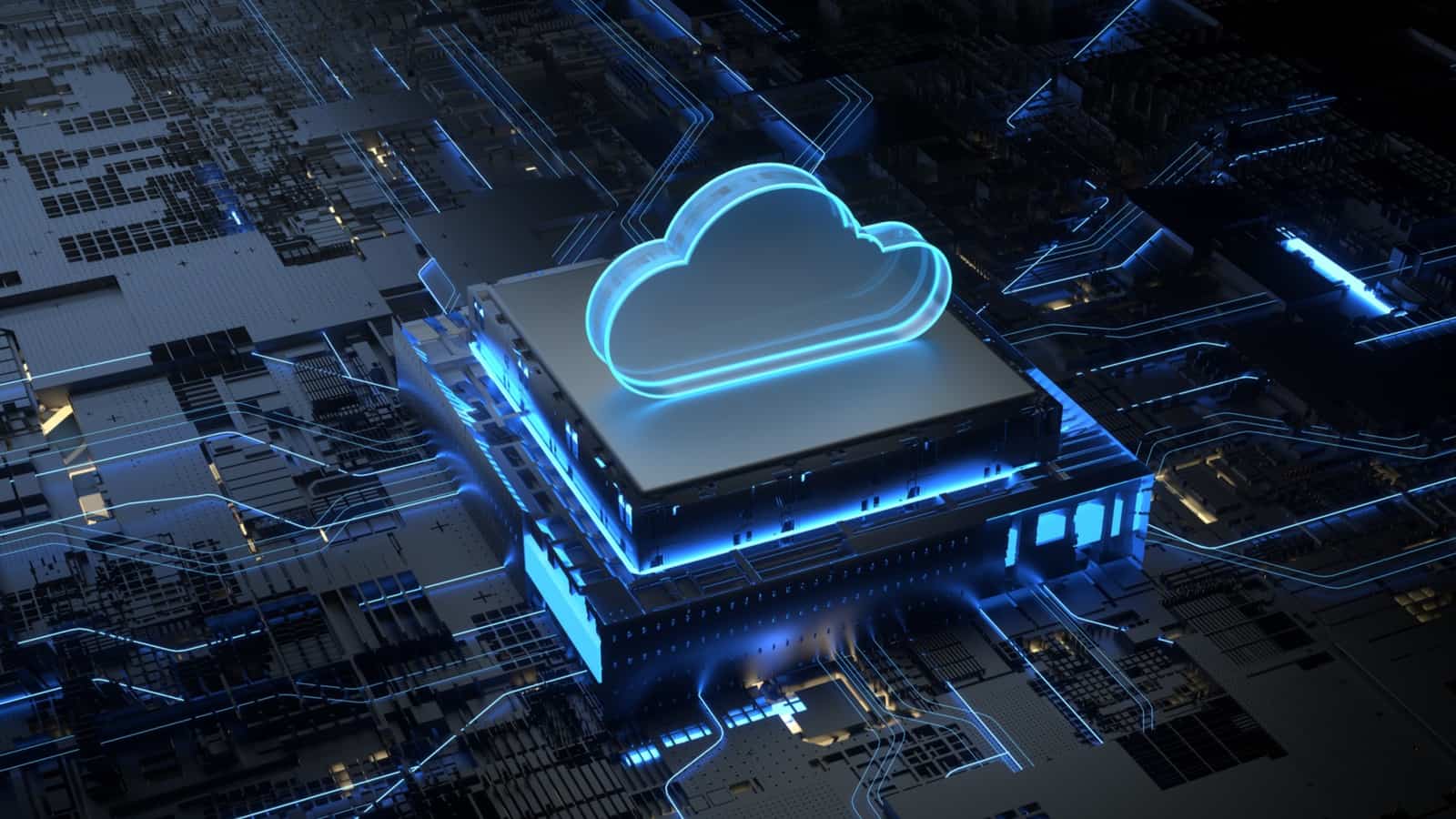
Technology is constantly changing. But how will this era of digital transformation change the manufacturing industry?
The NAM’s Leading Edge program partnered with Siemens to present “Beyond the Buzzwords: A Digital Thread Journey,” a four-part webinar series dedicated to understanding how cutting-edge ideas affect manufacturers. In the first episode, we put the digital transformation journey in context by introducing the “digital thread.” In the next three, we dove deeper into cloud acceleration, artificial intelligence and radical flexibility.
Cloud acceleration: A business’s digital needs are covered by a combination of software, hardware and physical infrastructure. If you turn to an offsite partner to provide any of those elements, then you are probably already using cloud acceleration to support your business.
- We spoke with Surf Loch Director of Project and Process Development Bryan Behr, Siemens Senior Vice President of Cloud Application Services Raymond Kok and Surf Loch Systems Engineer Miles Miller to learn more.
What it is: Cloud acceleration refers to a wide range of on-demand computing services hosted outside of your organization.
- Kok explained that cloud acceleration “is really a layer cake with three layers to it.” At the highest level is “infrastructure as a service,” like data centers. In the middle is “platform as a service,” which might provide you with the building blocks to create your own applications. And at the final layer is “software as a service,” which is what you would typically get from a commercial software vendor.
How it helps: Cloud acceleration is easier, more cost effective and more flexible than managing all of your computing needs internally.
- “The cool thing about the cloud is how containerized everything is,” said Miller. “Data is readily available in a very organized fashion. … If there’s a problem or something needs to be solved, we can put that data in the right hands.”
- Behr also pointed out the benefits for digital security. “It’s either rely on one thing to maintain our security on premise or rely on a very sophisticated cloud team as part of a set of resources. … [I]t became pretty obvious that that appears to be a safer place for us than potentially on premise.”
Learn more: To learn more about cloud acceleration, check out the full webinar here.
AI/machine learning: We know that AI and machine learning are affecting every industry. But how should manufacturers use this new technology?
We brought together Siemens Advanta North America CEO Rani Russell Shea and Schaeffler Special Machinery Head of Electrical & Software Engineering Stefan Gahabka to learn about how to approach AI.
How it works: “The basic idea with AI is that you use data to train models,” said Shea. “Those models can run analytics and then essentially make decisions while learning things, like pattern detection. And then when you’re talking specifically about industrial AI, you’re talking about using AI for machine learning solutions, to solve business problems, things like factory optimization.”
Augmenting humanity: According to Shea and Gahabka, AI is intended to elevate the human factor in manufacturing, not replace it.
- “Everybody really wants to be able to do their job better, faster, more accurately, more safely, more sustainably,” said Shea. “AI … is going to help us do that, and by doing that, it’s literally elevating the role of people so we’re free to then use our creativity, our experience and our knowledge to really address the complex stuff.”
Doing more: AI can be used to measure, model and optimize everything from energy usage to supply chains—even helping manufacturers find the right partners to match their sustainability objectives.
- “We talk about the hard things like quality and cost, but can also think about the next step,” said Gahabka. “We can search for suppliers that have sustainable locations and goals.”
Learn more: To learn more about AI and machine learning, check out the full webinar here.
Radical flexibility: Many think of efficient manufacturing in terms of highly standardized automatable processes. Today, though, new technology is creating new possibilities for manufacturers.
We convened an expert panel with Vice-President of Digital Enterprise at Siemens Alastair Orchard, Global Engineering Director and Automation & Robotics Lead at Unilever Cesare Gibilaro, and Process Orchestration & Manufacturing Hub, Manager for Business Operations at Unilever Louise Gigg to introduce us to radical flexibility and the future of manufacturing.
What it is: Technological advancements are making it possible for manufacturers to make only what is needed when it is needed, rather than having hard-coded machines that limit what your business can do for the sake of efficiency.
- For much of the past century, according to Orchard, manufacturers had been focused on “removing degrees of freedom from manufacturing, making it more rigid, so that automation could be applied to extremely repeatable processes … radical flexibility really challenges that assumption to its core. And we asked: what if nothing was hard coded?”
- “The radical way of looking at it,” said Gigg, “is reconfiguring the asset that you have on automation [and giving it] a new task or a new capability that it didn’t have yesterday.”
How to use it: Radical flexibility is all about using your assets more effectively and more efficiently to deliver more options for your customers.
- Gibilaro highlighted the ability to change directions with incredible speed. “With radical flexibility, we have the opportunity to reconfigure the line. … It is not a matter of hours, but a matter of minutes.”
Why it matters: Because radical flexibility allows processes to shift quickly, there’s less wasted time and inventory.
- “It’s this ability to make things where you need them in small quantities,” said Orchard. “You’re risking much less, and you’re not forced to make these giant bets.”
Learn more: To learn more about radical flexibility, check out the full webinar here.
Beyond the Buzzwords: Manufacturers Tackle Digital Threads

A manufacturing business is filled with internal processes, workflows and standards, and the average factory generates thousands of data points per day. But how does a manufacturer capture that data? How do they preserve institutional knowledge? What if they could automate workflow, create seamless project handoffs and track development around every stage of a project’s life?
The NAM’s Leading Edge program, in partnership with Siemens, asked a panel of experts these questions in “Beyond the Buzzwords: The Digital Thread Journey,” the first in a four-part webinar series focused on understanding the “digital thread” in the workplace. In the first installment of the series, Siemens Vice President of Industry Strategy Dale Tutt and Anduril Industries Chief of Engineering Tom McCarthy introduced us to the idea of the digital thread—what it is, why it matters and how manufacturers can harness its power to succeed.
What it is: The digital thread is a concept rather than a specific technology. According to Tutt, it is about capturing and connecting every piece of a project’s life cycle digitally, and using that connectivity to provide a seamless transition of information from one functional area to another.
- “We often refer to a digital thread as singular, like it’s a thing,” said McCarthy. “But really, in my mind, it’s a lot of threads. … it ends up being more like a rope than a thread.”
Why it matters: A strong digital thread can automate a manufacturer’s workflow, capture data more effectively, preserve institutional knowledge, trace development processes and even capture the context that informs how decisions are made.
- Radically new technology means that organizations can accomplish these tasks more successfully than ever before—and that those who ignore that opportunity could be left behind.
- “The biggest risk is to do nothing and assume this fad will go away,” said McCarthy.
The challenges: One of the biggest challenges in building a strong digital thread in your own workspace is integration and data management.
- Manufacturing systems need to manage lots of data coming to it in different formats. But according to Tutt, that data needs to be organized in a comprehensible way. “It’s about producing the right data at the right time in the right … format,” said Tutt.
- According to McCarthy, a digital thread isn’t just a database. It is the key that deciphers that data and makes it accessible and intelligible for the user. “We need a Rosetta Stone,” said McCarthy, “to be able to understand how that data maps onto other tools.”
Implementation and technology: New technology and strategic concepts have enhanced our capacity to build strong digital threads—and with that new ability has come a new and urgent need to make use of the concept to strengthen the manufacturing industry.
- To get started on your own digital thread journey, Tutt and McCarthy agreed that manufacturers should dig into the existing workflows in their organization and introduce one tool at a time, rather than trying to engineer a master solution all at once.
- “You can work the digital infrastructure you need for that workflow in pieces, so you can build them up over time,” said McCarthy. “You got to keep your eye on the end game, but if you try to build it all at once, good luck.”
Learn more: To learn more about digital threads, check out the full webinar here.
Coming up: In the next three webinars in this series, Beyond the Buzzwords explores a few of those tools and concepts that drive the digital thread in the modern day: artificial intelligence, cloud advancements and radical flexibility.
NAM Gets New International Policy Lead

Former Assistant U.S. Trade Representative for World Trade Organization and Multilateral Affairs Andrea Durkin has joined the NAM as vice president of international policy, the NAM announced Monday.
An experienced leader: “Andrea brings a wealth of expertise to the job, with more than three decades of service in both the public and private sectors,” NAM President and CEO Jay Timmons said. “As a leader in international trade negotiations, her deep understanding of international policy will enhance the NAM’s strategic objectives significantly as we continue to build off of successful engagements with our counterparts across Europe and the North American continent.”
- Durkin is a foremost U.S. expert on international policy, having worked in both Republican and Democratic presidential administrations. In her most recent role, at the USTR in the Executive Office of the President, she negotiated policy regarding issues before the WTO. She also led the operation of committees on technical barriers to trade, industrial subsidies, trade facilitation and more.
- Her negotiations credentials include free trade agreements in the Western Hemisphere and the trade-related portions of United Nations’ multilateral environment and public health agreements.
A teacher and an entrepreneur: An adjunct professor for 17 years, Durkin taught international trade and investment policy at Georgetown University’s Master of Science in Foreign Service program.
- She is also the founder of Sparkplug, LLC, a consulting firm that specialized in advising corporate affairs teams and think tank leaders on organizational strategy.
Novonesis Lets Nature Guide Sustainability Plans
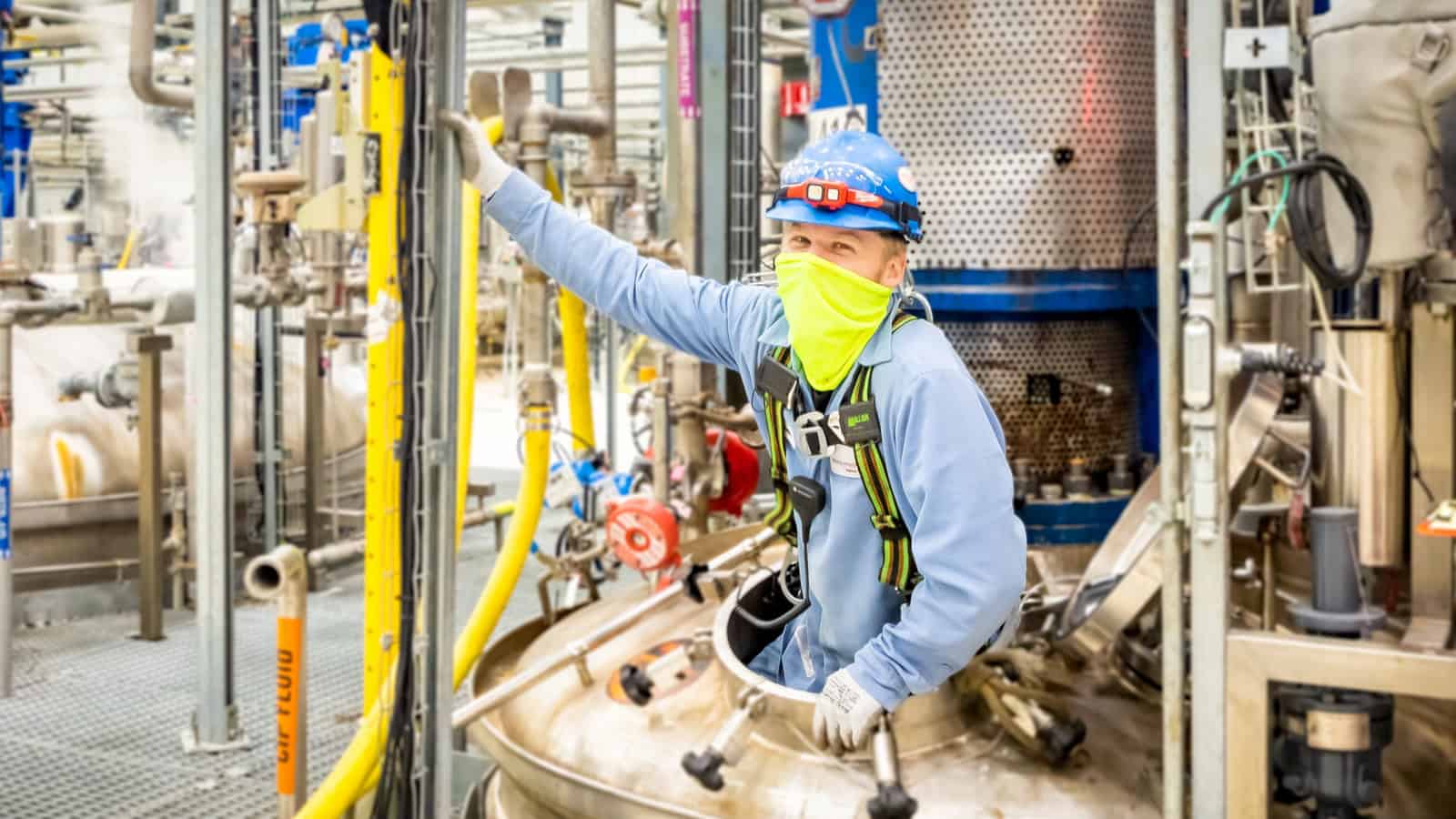
When it comes to good environmental stewardship, Novonesis takes its cue from the natural world itself.
“We are inherently sustainable because we draw from nature,” said Novonesis Senior Vice President of Planetary Health Biosolutions Rene Garza. “As biology matures, we find that nature has evolved to be an efficient utilizer of every single resource out there.”
Back to basics: It’s the perfect model for the newly formed Lyngby, Denmark–headquartered biosolutions firm, the product of a January merger between two Danish legacy companies: enzyme and microbial technology firm Novozymes and bioscience supplier Chr. Hansen.
- The portfolio of Novonesis—which is a combination of the Greek words for “new” and “beginning”—includes enzymes, microbes, novel vitamins and other naturally derived offerings.
- The business has customers across more than 30 industries: food and beverages, animal health and nutrition, energy, fine chemicals, dietary supplements, household care, plastics, plant health and more.
An early adopter: Legacy firm Novozymes set its sights on sustainable business practices more than two decades ago. In 2002, it became the first company in the world to publish a triple bottom-line integrated report.
- “We recognized early on that resources are finite, and the need to do more with less is part of ensuring a better quality of life,” Garza said of the company’s decision to undertake the annual report, a method of stocktaking on sustainability activities using three “bottom lines”: profit, people and planet. “We realized we’re not just here to generate money, but also to create an impact on society and our environment.”
Big goals: That’s why Novonesis has set lofty aims for itself (and is meeting them).
- Firmwide targets include carbon net neutrality by 2050, as well as a 75% reduction in emissions from its own operations and a 35% reduction in emissions from its supply chain by 2030.
- How is it doing all this? Innovation and persistence, according to Garza. “We want to improve our efficiency by as much as we can, and we do this by making improvement to our hardware—pump replacements, reengineering [of] our microorganisms. We also source renewable energy.”
- In fact, Novonesis is on track to source 100% of its energy from renewables by next year. Between 2018 and 2022, it reduced absolute emissions by 63% while increasing revenue.
Water, too: Novonesis knows how important water use is in the overall sustainability picture.
- The company is piloting a reverse-osmosis filtration system at its North America headquarters in Franklinton, North Carolina, that lets it recycle and reuse water. The program, scheduled for full operationality by next year, is going so well there are plans to replicate it at other Novonesis facilities worldwide.
- And at the company headquarters in Denmark, “we have been able to recycle 58 million liters [of water]—the equivalent of 23 Olympic-size swimming pools,” Garza reported.
What government can do: Novonesis and other manufacturers are making great strides in sustainability, but having the right policies in place at the federal level would make it easier for them to do more with less, Garza continued.
- “We need regulatory reform,” he told the NAM. “Federal regulations, if done well, really can drive innovation, particularly in biotechnology. … The government should [also] invest in pilot and demo scale fermentation capacity to allow startups to scale up.”
- The U.S. has the largest concentration of startup companies in the world, he went on, but there is now a “valley of death” between discovery and commercialization of innovations in biology, which federal funding could help remove.
- Finally, manufacturing in the U.S. needs the reinstatement of pro-growth policies from the 2017 Tax Cuts and Jobs Act, including 100% expensing for research and development costs and accelerated depreciation for capital investments.
Stakeholder education: Getting more people aboard the sustainability train is doable—but it will require continued education campaigns.
- “We need long-term thinking [and] to encourage stakeholders to prioritize the long-term over short-term gains,” Garza said. “Sustainability is about balancing immediate and future needs.”
IRI Announces 2024’s Top Innovator Finalists

The Innovation Research Interchange has announced the finalists for this year’s IRI Innovation Excellence Awards.
What’s going on: The honors given by the IRI—the NAM’s innovation arm—pay tribute to organizations and individuals whose outstanding vision and tireless pursuit of excellence are having a positive impact on lives today and shaping the industries of tomorrow. Honorees come from companies of all sizes and industries.
The categories: Awards are given in five categories, three to companies and two to individuals. They are as follows:
- IRI Innovation Leadership Award (individual)
- IRI Promising Young Innovation Professional Award (individual)
- IRI Excellence Award for Innovation in Sustainability (company)
- IRI Excellence Award for Outstanding Innovative Culture (company)
- IRI Excellence Award for Digital and Technological Innovation (company)
Who participates: Each year, nominees comprise innovators who are leveraging technology to enhance operational performance at their companies or sustainability and fostering a collaborative workplace culture that celebrates innovation.
- High-performing leaders who drive sustainability initiatives are also recognized, and consultants and university partners working on exciting innovation projects with a company are eligible for nomination, too.
Why they’re important: In addition to building team unity and encouraging executive leadership to invest further in innovation, the awards give companies the chance to revisit the successes, challenges and lessons learned throughout their innovative projects.
- Selection as a finalist shows customers, prospects and partners that a company or individual is at the forefront of innovation.
Attend the celebration: Winners will be announced May 16 during the Innovation Celebration and Reception at the Innovators Summit in Boston. Celebration admission is included with summit registration.
About the IRI: The IRI offers insights, case studies, research, benchmarks and strategic connections—all built around a set of innovation growth drivers as determined by members annually. Learn more about the IRI here.
Norfolk Southern Pivots to Serve Customers After Bridge Collapse
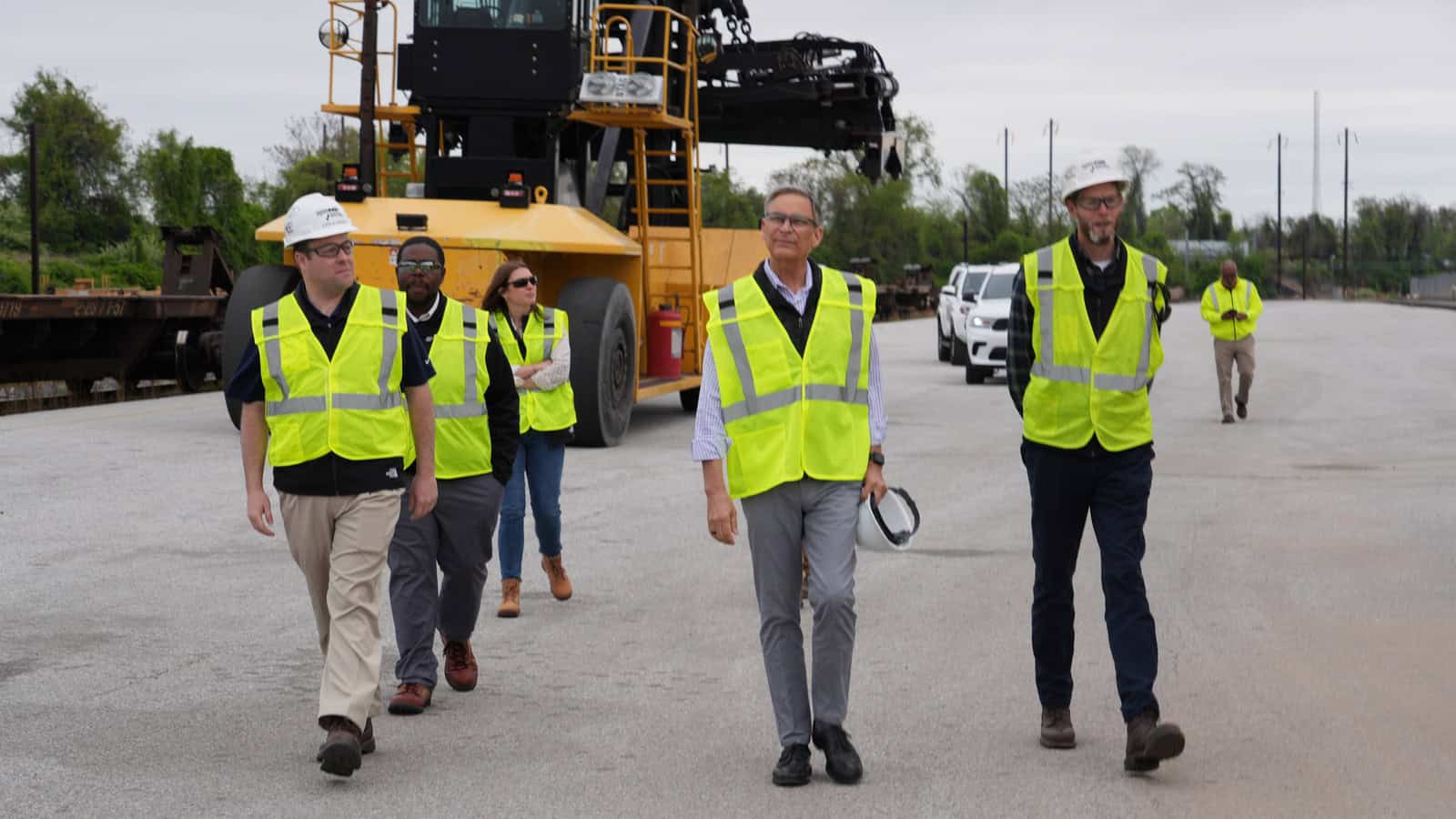
It’s been nearly a month since a cargo ship hit the Francis Scott Key Bridge in Baltimore, Maryland, resulting in six deaths, the destruction of the bridge and the shuttering of an important East Coast port.
- But thanks to hard behind-the-scenes work by Norfolk Southern railway since the accident, customers aren’t feeling the supply chain pinch the way they otherwise would.
What happened: NAM President and CEO Jay Timmons, along with an NAM delegation, visited the Port of Baltimore last Friday to tour Norfolk Southern’s operations there. The port is the largest for vehicle shipping in the U.S. and was the 17th biggest in the nation by total tonnage in 2021.
- On March 26, the day the Singapore-flagged Dali cargo vessel hit the Key Bridge, Norfolk Southern—which moves 7 million carloads of cargo annually—began strategizing ways to support increased shipping volumes on behalf of its customers. And it’s been doing that ever since.
- “We often say the weight of the world moves on rail … and it’s true,” Norfolk Southern Chief Marketing Officer and NAM board member Ed Elkins told the NAM during the site visit. “Our ability to serve the market through temporary disruption is really a demonstration of our strategy in action, where we leverage the experience of our railroaders and the strength of our franchise to find a Better Way to provide safe, reliable service.”
Quick adaptation: Norfolk Southern’s strategy for adapting to the closure of Baltimore’s port has included:
- The launch early this month of a dedicated new service to move freight between the ports of New York and New Jersey and Baltimore’s Seagirt Marine Terminal;
- The facilitation by the railway’s Triple Crown Services Inc.—a door-to-door East Coast truckload transit network—of a dedicated intermodal service for cargo owners who require door-to-door service;
- The use of “Go Teams,” groups of employees ready for rapid response service and created by Norfolk Southern during the pandemic; and
- Regional collaboration with the Port of Virginia to leverage service points including the Virginia Inland Port and others.
Reopening: The Port of Baltimore could be back to full functionality by the end of May, the U.S. Army Corps of Engineers said earlier this month.
- “The NAM will stay in close coordination with our members regarding supply chain impacts stemming from the collapse of the Francis Scott Key Bridge,” said NAM Director of Transportation, Infrastructure and Labor Policy Max Hyman. “We also remain engaged with leading federal officials on recovery efforts and will continue to support critical infrastructure projects such as the Port of Baltimore.”
How Will AI-Run Factories Be Different?

A common theme in science fiction is the fully automated, robotized factory that manufactures nothing but robots. We’re not there yet, but the fully automated manufacturing plant has already begun making everyday products, including computer parts, electric shavers and CNC machines.
The promise of AI: Now generative AI is promising to take manufacturing automation manufacturing to a new level.
- At the 2023 Hannover Messe trade fair in Hanover, Germany, Siemens and Microsoft showcased an offering now in use in factories worldwide: a system that uses ChatGPT to generate code for industrial computers known as programmable logic controllers. (For a deeper dive into what this means for manufacturing, read the full version of this article by Tim Hornyak in the Innovation Research Interchange’s Research-Technology Management magazine.)
Why it’s important: The innovation allows users to ask ChatGPT to generate code for specific tasks (i.e., a program to operate the stamping of a part).
- In addition to saving time and reducing the likelihood of errors, it is capable of understanding commands given in natural language, a characteristic that vastly increases the number of potential users.
Efficient designs: Creating more efficient designs is another early use case for generative AI.
- General Motors has used the technology to evaluate better designs for some of the roughly 30,000 parts that go into the average car. For example, a standard seat bracket—an important safety component that binds seatbelt fasteners to seats as well as seats to the floor of the car—consists of eight separate pieces welded together.
- Generative-design software used by GM analyzed the requirements and suggested more than 150 alternative designs, far more than the two or three options a designer can typically offer. GM engineers chose one: a single piece of stainless steel that is 40% lighter and 20% stronger than the conventional part.
Pharma applications: Generative AI looks promising for the pharmaceutical industry, too, given its potential for cutting costs and drug time to market.
- Merck has used generative AI to create synthetic images of complex but rare defects, a group for which training data are limited. The drugmaker’s quality-control sensors use the synthetic images to watch for novel defects.
Other potential use cases: The possible uses for generative AI in other areas is vast and includes the following:
- Reducing time and cost involved in creating physical prototypes
- Automating search and summary of documents related to manufacturing equipment, which would speed repairs and maintenance
- Accelerating supply chain operations by forecasting demand patterns, minimizing production downtime and suggesting better transport routes
- Customizing products or solutions to better suit customer needs
- Forecasting raw materials needs, optimizing production schedules and identifying production inefficiencies
However … Generative AI in manufacturing is not without its challenges. The energy cost to power a single server rack in the U.S. is $30,000 a year.
- Just one training run for an AI engine consumes the power equivalent of 120 U.S. households per year.
- With the reliance on large datasets, manufacturers are concerned about data privacy and security, necessitating robust data-protection measures.
- The integration of AI in manufacturing may require a change in workers’ skillsets and corporate culture.
- As AI plays a more significant role in decision-making, ethical questions about bias and accountability are emerging.
- Manufacturers have to ensure that AI systems operate fairly and transparently.
Find out more: AI in manufacturing is just one of the timely topics covered in depth in Research-Technology Management, the journal of the IRI, the NAM’s innovation division. Learn more.
Making the Business Case for Sustainability
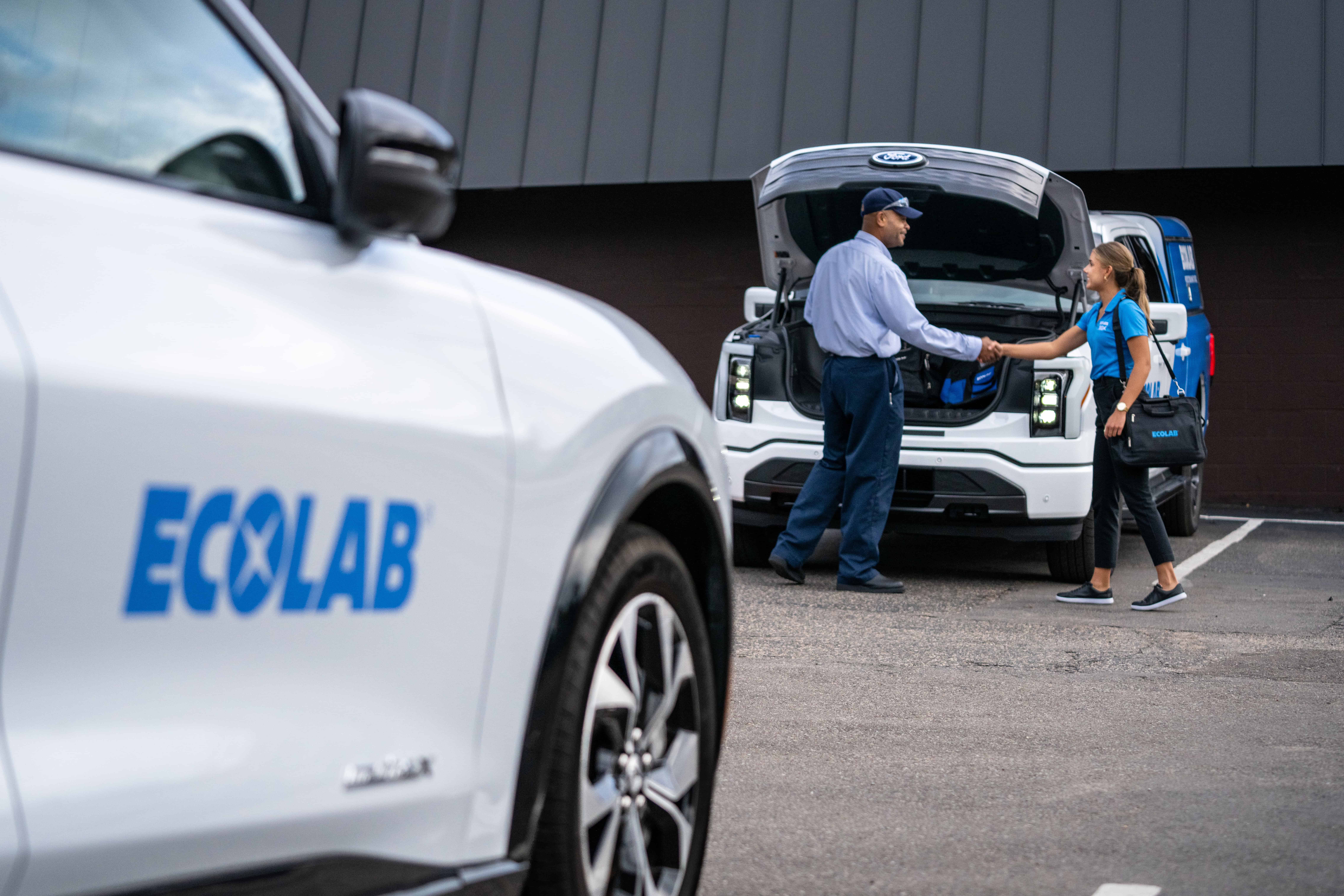
Ecolab’s mission hasn’t changed much in more than 100 years. It’s still “bringing science to our customers in a way that drives performance, productivity and less water and energy use.”
- That’s according to Ecolab Chief Sustainability Officer Emilio Tenuta, who says being climate-minded is not only “the right thing to do,” but also at the core of the St. Paul, Minnesota–headquartered water, hygiene and infection-prevention company’s operating model.
A dual purpose: “We make the business case for why sustainability and [profitability] can go hand-in-hand when it comes to driving solutions,” Tenuta told us recently. “It’s why 48,000 Ecolab associates wake up every morning with the feeling, ‘We’re making a real difference in the world.’”
- Ecolab—which recently announced that 100% of its European operations are now powered by renewable energy sources—helps millions of customers worldwide reduce their environmental impact while promoting food safety, maintaining clean environments and optimizing resource use.
- “At Ecolab, we talk about eROI—Exponential Return on Investment,” Tenuta explained. “It’s about understanding that we have the ability to deliver on a business outcome—profitability—while also delivering an environmental impact.”
Don’t forget water: Often neglected in sustainability conversations, Tenuta said, is water. For a full picture of the effect of conservation and innovation efforts on climate, water needs to be factored in.
- “Sometimes we forget the role that water plays in addressing climate change,” he continued. Depending on the type of manufacturing, up to 75% of energy is driven by the water systems. You have to heat it, treat it, pump it, cool it. …Water doesn’t necessarily get the same headlines as climate, but if you follow the water, that’s going to have a lasting impact” on the environment, while also saving you money.
A holistic approach: In addition to being recognized regularly for its environmental stewardship, Ecolab is routinely named to most-ethical-company lists. That’s no accident; to the company, caring for the planet goes hand-in-hand with caring for people, Tenuta told the NAM.
- “Workplace quality is just [one way of] demonstrating a holistic approach to the world,” he said. “That’s how we think about it at Ecolab. It’s for us as a company but it’s also for society as a whole.”
A sustainable partnership: In furtherance of its financial and net-zero emissions goals, the firm recently partnered with Ford to electrify its service and sales vehicles.
- Ecolab—which has “a longstanding relationship dating back almost 100 years” with the automaker, according to Tenuta—has pledged to both halve emissions from its own operations and help its customers reduce their emissions by 6 million metric tonnes by 2030. “To get there, we need to implement initiatives like electrifying our fleet,” he said.
- Under the program, Ecolab will buy and deploy more than 1,000 Ford F-150 Lightning and Mustang Mach-E electric vehicles for its employees in California by 2025. The company will then move to electrify its entire North American sales and service fleet by 2030. “This allows us to support our associates so they can be more productive in their day-to-day work serving our customers and getting to net zero.”
Advice for manufacturers: Achieving sustainable operations doesn’t happen overnight—but undertaking the efforts to get there is well worth manufacturers’ time, Tenuta said.
- “Sustainability requires a multifaceted approach that considers all things: social, emotional, economic. It’s about in some ways taking a longer-term view of progress and opportunity. That can be challenging, but by elevating innovation and long-term commitment, companies can build a more sustainable future … and boost profitability.”
